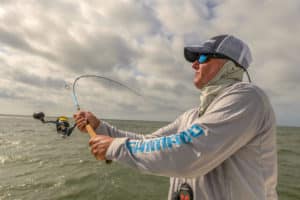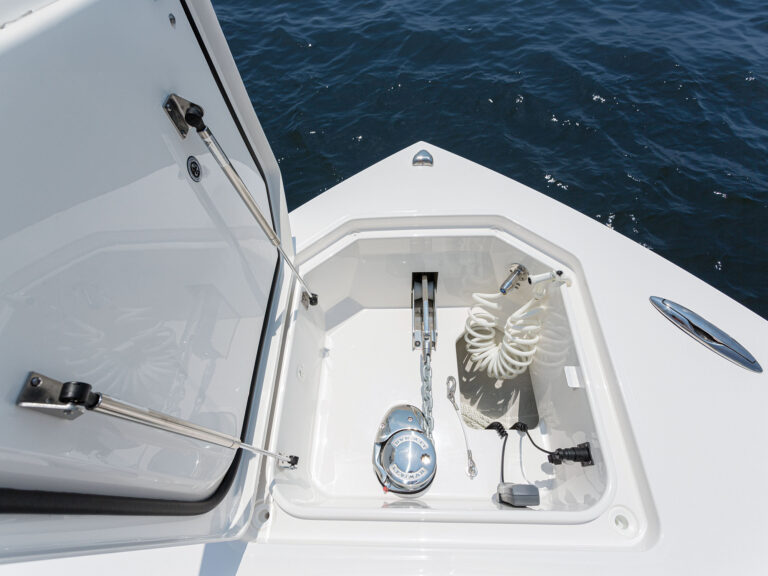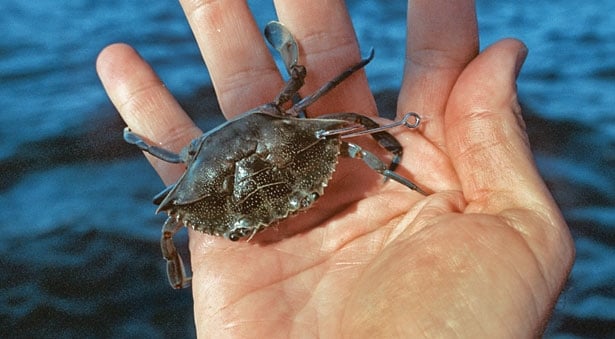
There are dozens of species of crabs in North American coastal waters, from the eraser-size Florida mole crab to giant Alaskan king crabs that won’t fit in a washtub. All of them have in common that at some stage of their lives, they are high on the list of edibles for local game fish.
How to Fish with Crabs for Tarpon
In Florida, there’s no better spring and summer tarpon bait than the “pass crabs” that drift through the west coast passes by the thousands from April through July. They max out around 4 inches across the carapace, and have well-developed swimming legs on the back of their shell.
Catching pass crabs is straightforward; get out on the early part of an outgoing tide near one of the passes, find a rip stacked up with grass, foam and debris, and dip-net the drifting crabs. You can also sometimes find them along the beaches at dawn when an onshore wind has stacked grass along the shore.
Fishing with crabs as bait allows you to target a plethora of species. These crabs, candy for both tarpon and permit, also are tasty tidbits for redfish and snook — as well as cobia, which are known as “crab eaters” in some areas for good reason.
Fishing with Blue Crabs
From Virginia to Texas, the blue is abundant and easy to catch with a trap you can hang off any dock — a piece of mullet or chicken neck draws them in. Small blues, to 4 inches across, make the best live baits. Cobia love them, and so do big redfish and drum. You can also do well cutting larger crabs in half, particularly for redfish and big black drum.
How to Fish with Fiddler Crabs
These little crabs found on muddy shorelines, and around oyster bars and backcountry creeks, are wonderful bait for pompano, permit, sheepshead and redfish.
To catch them, take a tip from the pros and conduct a “crab roundup.” Make a sort of funnel from strips of plywood about six inches tall and eight feet long, stood on edge with a couple of stakes to hold them in place. Sink a 5-gallon bucket into the sand at the small end of the funnel, then herd the crabs into the funnel.
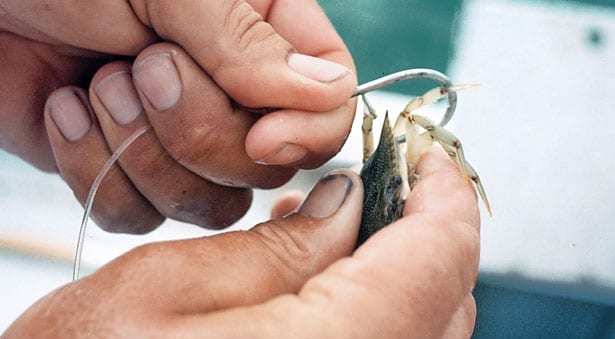
Other Types of Crab Baits Crabs
Sand fleas — actually mole crabs — rate as a favorite of many fish, particularly pompano on the beach. Snook eat them too. Sand-flea rakes are available at tackle shops in most beach communities. Sieve the sand at the surf line where you spot the diminutive crabs.
Throughout the tropics, hermit crabs are a favorite permit bait. The crabs are slow and easy to catch along any beach or coral edge. When you need fresh bait, pull them out of their shell and bait up — it’s a rare permit that can pass one up.
Black mangrove crabs swarm the roots of mangrove trees all over peninsular Florida. About the size of a 50-cent piece, they are the right size for reds, sheepshead and pompano. Put a piece of cut bait on the mud next to mangrove roots or seawalls at low tide, and set a cardboard box soaked in salt water atop it. The crabs will soon find the bait. They’ll stay put under the box long enough for you to scoop them up — without the box, they’ll run off before you can get close enough to capture them.
How to Keep Your Crabs Alive
Most species of swimming crabs do fine in a flow-through livewell; remove the pincers so they don’t kill each other or get your fingers when you scoop them up. Keep semi-aquatic crabs like fiddlers and hermits for several days by simply placing them in wet seaweed in a 5-gallon bucket.
How to Fish with Crabs
Fish live crabs on a short-shank 3x-strong hook matched to the quarry. For tarpon and cobia, a 5/0 or 6/0; for permit and slot reds, a 2/0 to 3/0. For small crabs, such as fiddlers when you’re after pompano and sheepshead, use a size 1 or 1/0. For the tiny mole crab, a light wire hook in size 1 or 2 is the ticket for pompano. Hook all these crabs through one of the points in the shell, coming up from below. Twist the hook so the point drills through the carapace without cracking it. Check the hook point after the bait is in place; on large baits like blues, the shell can sometimes slightly turn the point.
Crab Lure Imitations
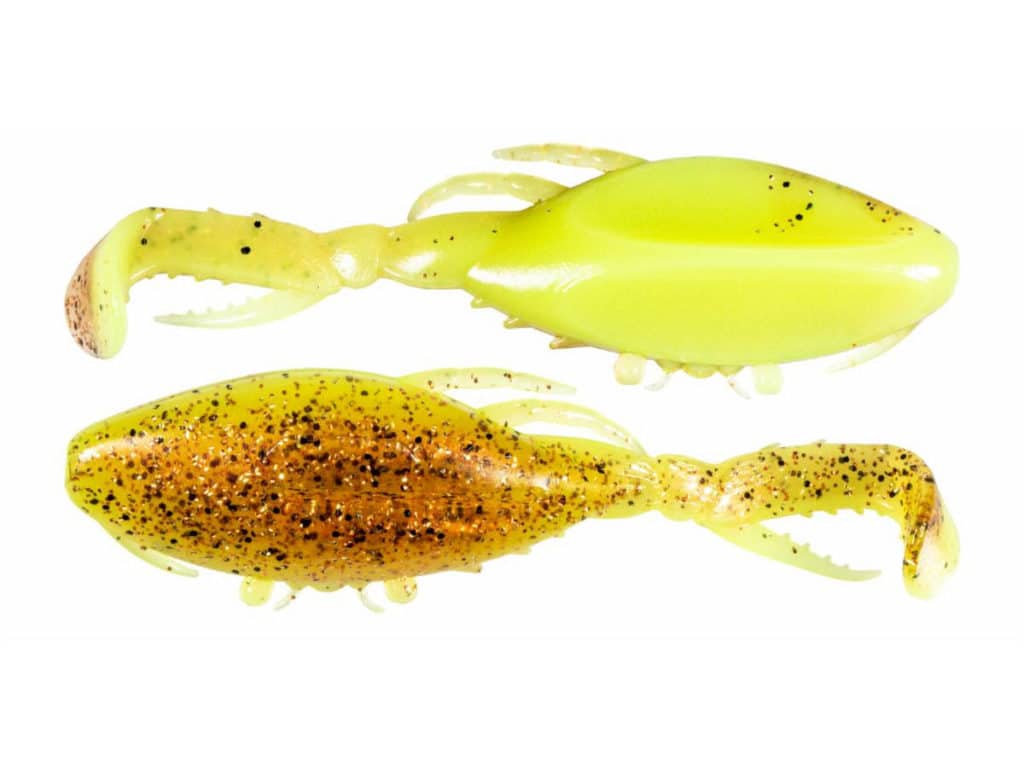
Among artificial lures, find a bait that looks so much like the real thing that you expect it to attack with waving claws — is a great alternative to live crabs in moving water. In soft plastics, Z-Man, D.O.A., Berkley Gulp! and Savage Gear are good, among others.
The big thing in fishing an artificial is to resist the temptation to fish crab lures like a jig; that’s about five times too fast. Use scented baits for sight-fishing. Toss them slightly ahead of tailing reds or drum, twitch a few times to get the fish’s attention, and then let the built-in scent do the rest. Ditto for tarpon: Land the bait well in front of them, let it drift down on their nose, and hang on tight.

